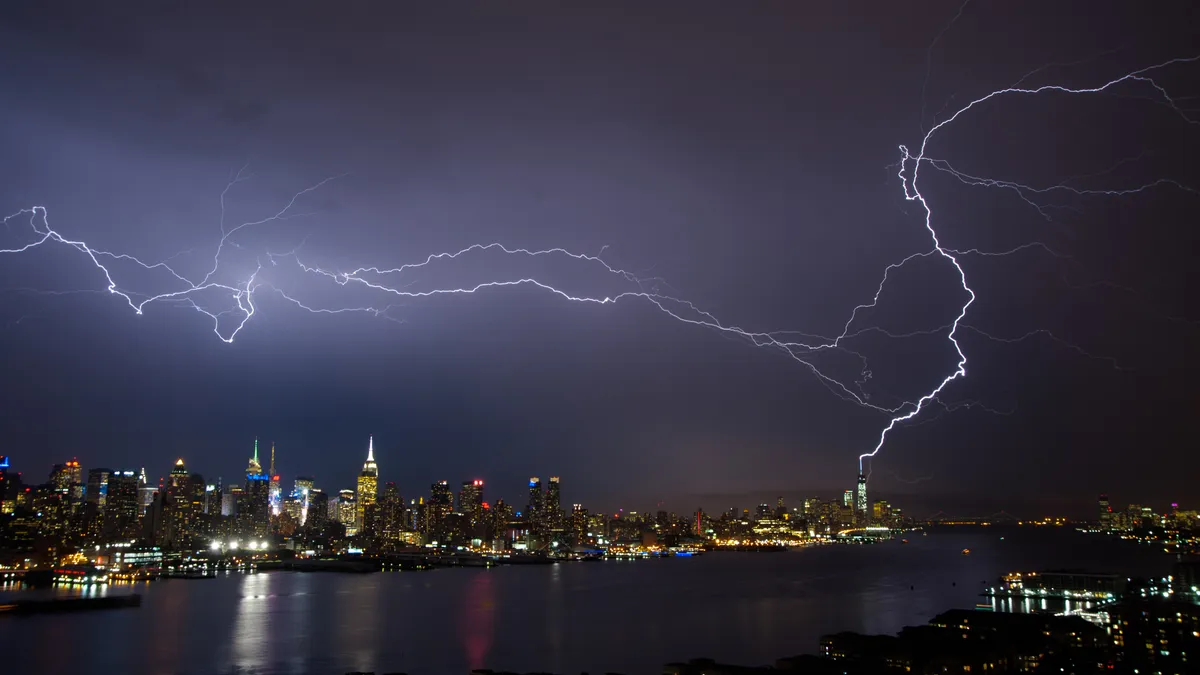The basic business goal of a utility is to deliver reliable power in a safe and affordable manner to all customers. So, when a severe storm comes through and the lights go out, does it negatively impact the utility's brand reputation?
The answer is, it depends.
Ever since Superstorm Sandy hit the US several years ago, we’ve been tracking online utility storm communications in an effort to see firsthand what customers respond well to and what they don’t. Here are the top 3 lessons we’ve learned.
Note: our analysis only covers the communications side of storm restoration. Storms have unfortunately had devastating impacts on affected communities, and our hope is that effective communications can be used by utilities to help mitigate some of the preventable negative consequences, while crews work as hard as they can to restore power.
Lesson 1. There are 3 distinct phases to effective storm communications, and customers react poorly when content spills over between them.
Phase 1: Use your marketing collateral to educate widely, urgently and memorably.
Before the storm is the only time to educate customers with curated content. Videos, infographics, and tips, via digital and print channels are all effective. But make sure that the urgency conveyed by your branding here is different from the rest of your communications, so it gets noticed right away. By the time storm hits, it’s too late.
Phase 2: Be prepared to communicate indirectly.
During the storm is when customers without power are feeling anxious, and those with power are hoping for the grid to stay intact. As a utility, you are too busy to be communicating out, so your customers expect media outlets to convey information on your behalf. That means all pre-planned utility communications (e.g. energy efficiency programs) should be stopped beforehand, or customers will get confused and react negatively.
Phase 3: Communicate in real-time, authentically.
Storm restoration communication requires a real voice, in real-time. Customers respond quite positively to an immediate response that there is, in fact, no restoration update for their street. They see real-time communications as a sign that the utility is also doing everything it can in the field. On the other hand, customers react very negatively to any curated content, even if the content is meant to provide helpful information. Recognizing that many customers are likely reaching out on limited phone battery life, their visceral reaction makes more sense.
Lesson 2. During the restoration phase, every brand sighting and absence of it impacts your reputation.
This is understandably the toughest phase for your customers and your brand. Not surprisingly, customers are unhappy if there is no sign of communication or field activity. But public sentiment towards you can also sour in a digital nanosecond if your branded truck is seen driving by and the customer’s power still doesn’t turn on.
To manage this, whoever can communicate from the utility side needs to be doing so often and caringly, whether it is the customer service rep, the social media administrator, or even equipping the line workers with an effective one-line response. In the most recent storm to hit the Southeast, a social media rep from Alabama Power did an excellent job to work with customers in real time.
Lesson 3. Storm communications is a great time to get media on board early.
Several major storms ago, a mid-Atlantic IOU invited media to its storm operations center to demonstrate the planning that goes on before the storm, and to show that if the utility is taking it seriously, so should the customer.
After the storm, the same media outlet gave glowing accolades to the IOU for its efforts in preventing outages, and this had two positive effects on the utility’s brand reputation. First is that it led to a very significant positive online boost in brand reputation (Figure 3).
Second, it led the public to dissociate the notion of outages with the utility, demonstrating that the utility’s efforts were understood and appreciated. A word cluster analysis showed that the word “outages” became associated with “blizzard” after the storm, and the words “power” and “bravo” were now associated with the utility. Before the storm, both “power” and “outages” were associated with each other and with the utility.
Conclusion
Effective storm communication is about matching channel etiquette with the message that needs to be conveyed at different points in time. Channel etiquette includes the level of authenticity required, as well as the frequency of communication that is expected, both of which are heightened across the social media channels that are so vital in today’s restoration communications phase. In contrast, the traditional utility communication approach is planned and deliberate.
How comfortable a utility is in adopting an authentic, multi-channel communications approach is a major driver today in how well its brand weathers storms.
In other words, it’s not just what you say, but how you say it, when you say it and where you say it that makes a difference on how the message is received and understood by customers.










